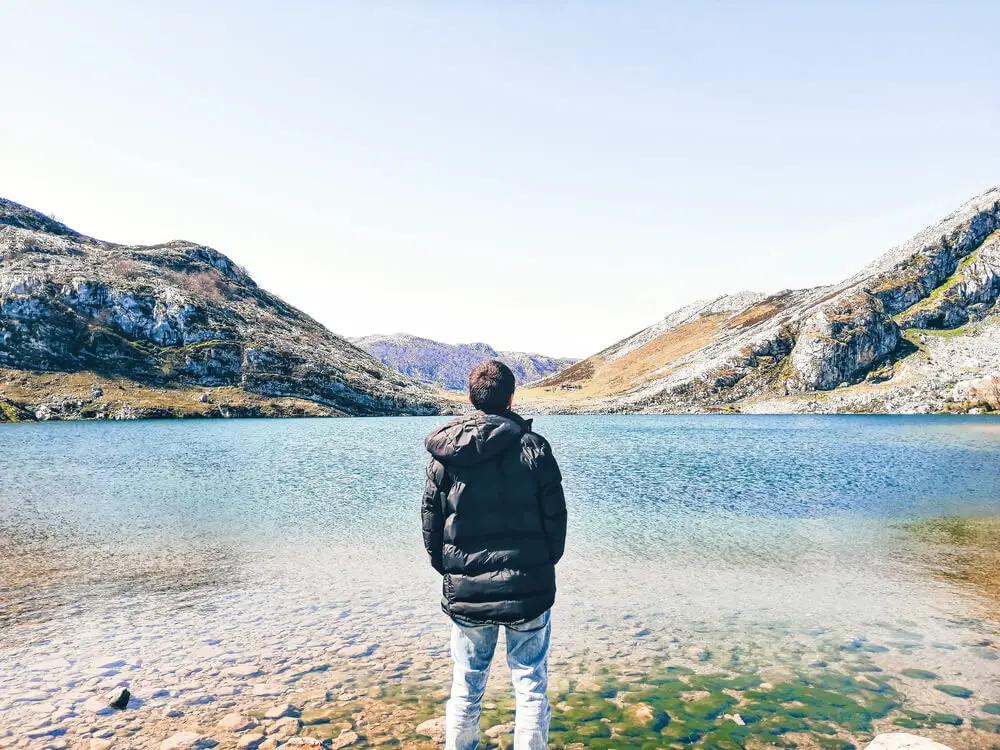There was a long weekend coming up, and I was looking for a destination to visit, and Asturias came to mind. Located in northern Spain, the Asturias region is one of the most beautiful in Spain and perfect for nature lovers.
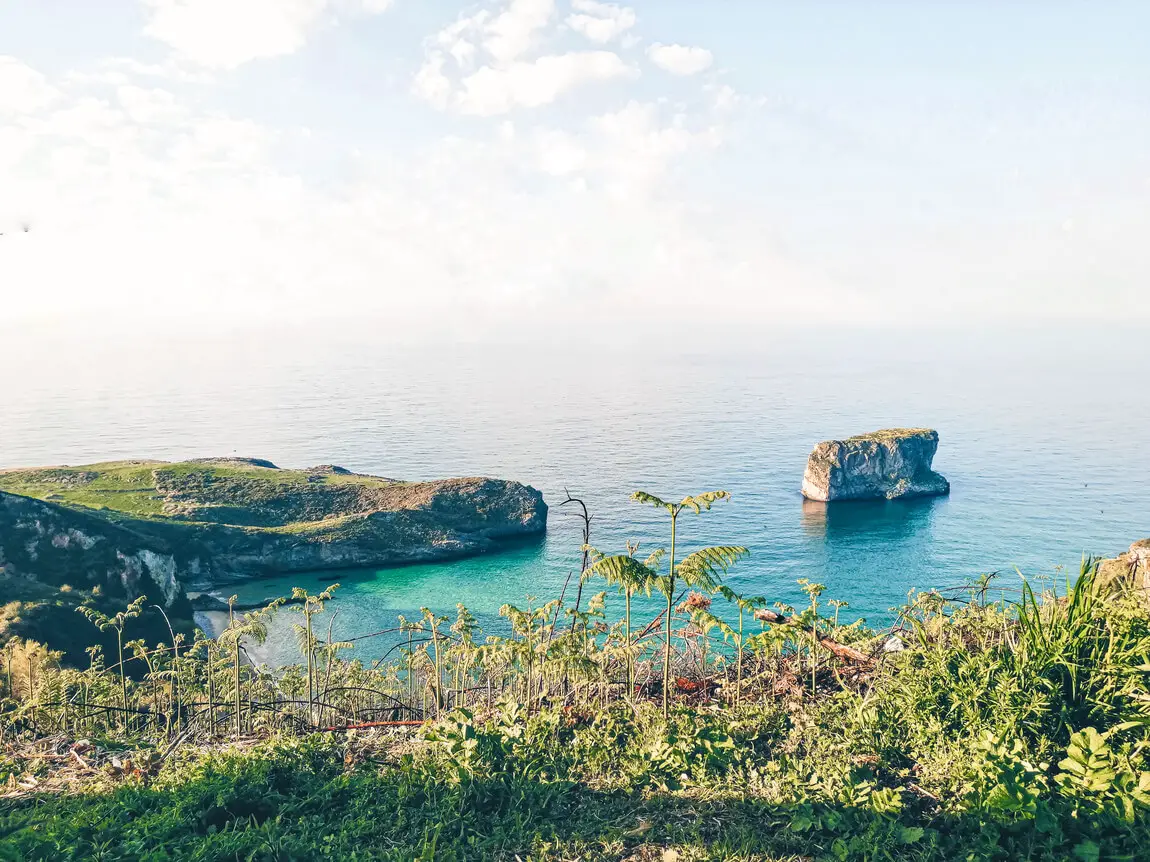
Prepare to be surprised by the beauty of the beaches, the quaint towns or the breathtaking landscapes of the Picos de Europa Park!
In this blog post, you will find several tips for planning your visit to Asturias.
How many days do you need to visit Asturias?
Although in my case, I only spent 2 days visiting Asturias, I believe you should dedicate 3 to 4 days to exploring the region. This is especially true if you want to walk some trails, such as the Ruta del Cares.

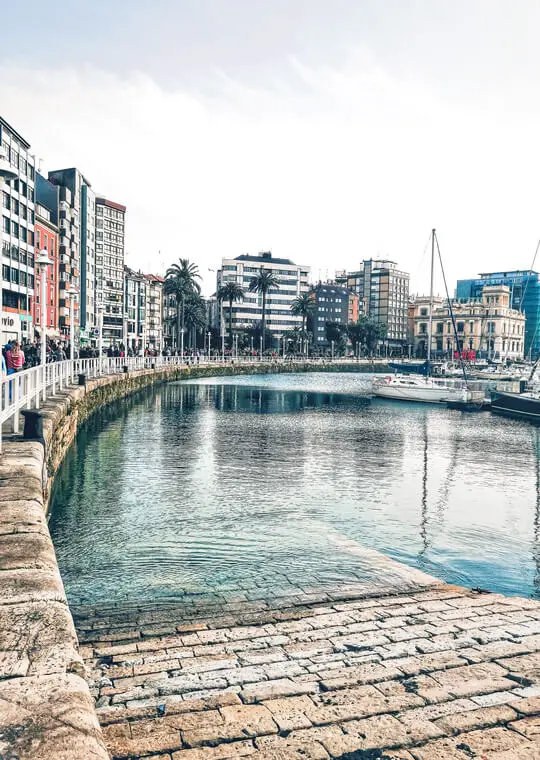
The 2-day itinerary on this blog post does not include the outward and return trip to the starting and ending points of the trip. So please take that into consideration when planning your trip to Asturias.
What is the best time of year to visit Asturias?
The weather forecast in Asturias can be a bit uncertain, as is usual in almost all of northern Spain. So, to ensure you can find milder temperatures and less likelihood of rain, I suggest you visit Asturias from June to September.

How to get to Asturias?
Asturias has only one airport, located near Santiago del Monte. This airport has some direct connections, both to other cities in Spain and to other cities in Europe:
- Portugal (Lisbon)
- United Kingdom (London)
- Italy (Rome, Milan)
- France (Paris)
- Germany (Düsseldorf, Frankfurt)
In addition to this airport, there are other airports relatively close to Asturias. These are Bilbao, Santiago de Compostela, A Coruña and Santander.
What is the best way to visit Asturias?
To ensure greater freedom when visiting the Asturias region, certainly having a car is the best option. If the aim is to visit only the most popular points of interest (such as Cangas de Onís, Gijón, Oviedo or the Picos de Europa Park), public transport is more easily available.
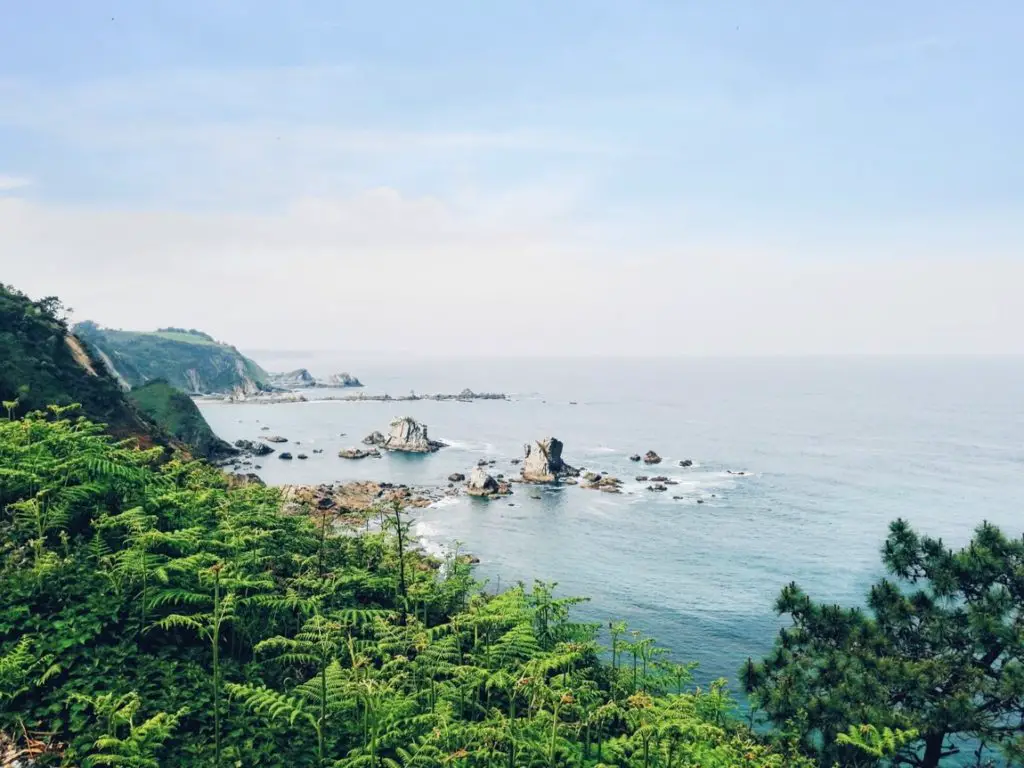
However, for other more isolated places, such as the beaches, then having a car available is really the best option!
Accommodation in Asturias
The answer to the question of “where to stay in Asturias?” depends a lot on the itinerary defined. In my case, for example, as I had very little time available, I chose to change accommodation every night. Unfortunately, I didn’t like any of the accommodations I tried, so I have no recommendation in that sense.
However, these are the regions/cities with the most accommodations available:
Activities & tours in Asturias
💼 TRAVEL INSURANCE: Unexpected events happen anywhere in the world, so I always recommend getting travel insurance. I regularly use Heymondo, which offers some of the highest coverages on the market at very competitive prices. As well as covering medical expenses, Heymondo’s insurance also covers the loss or theft of luggage, electronic equipment and more. They also have a 24/7 customer service through their App. As A Ticket to Take Off reader, you get a 5% discount when purchasing Heymondo insurance. The purchase must be made using this link, and the price shown on the website already includes the discount.
What to visit in Asturias?
What to visit in Asturias – Day 1
» Beach of Silence
It may not be the first thing that comes to mind when talking about Asturias, but here you will find beautiful beaches and the Beach of Silence is one of them. On many of the beaches, the colour of the water wouldn’t make you believe that you are in the North of Spain.

What’s the only bad thing about it? The water temperature… as you would expect, it is freezing!
» Cudillero
A small town by the sea with a fishing tradition and very colourful houses. You can visit it very quickly, and you’ll surely feel like taking lots of photos.
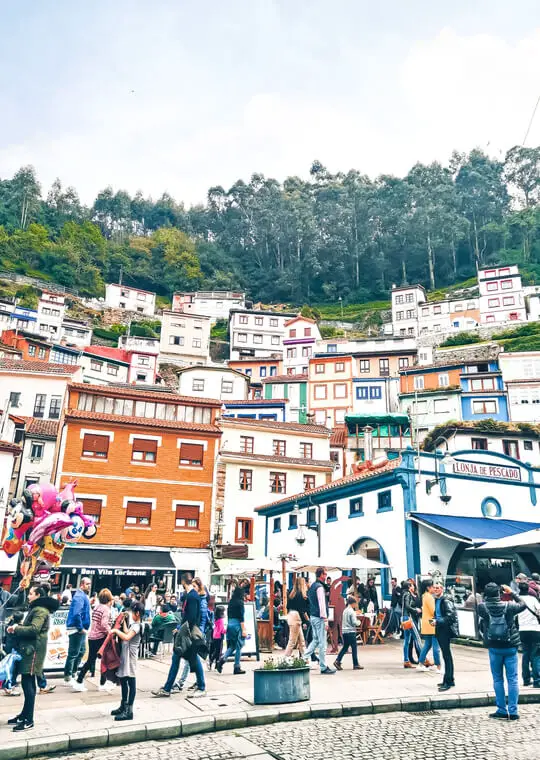

Do not miss the La Garita viewpoint, where you can get a panoramic view of Cudillero’s main square.


» Gijón
Gijón is one of the best-known cities in Asturias, being the city with the largest population.


You can start your visit in the Cimavilla neighbourhood with a short walk in Cerro de Santa Catalina park. In the park, you can also observe the “Elogio del Horizonte” monument, which was once one of the symbols of the city.
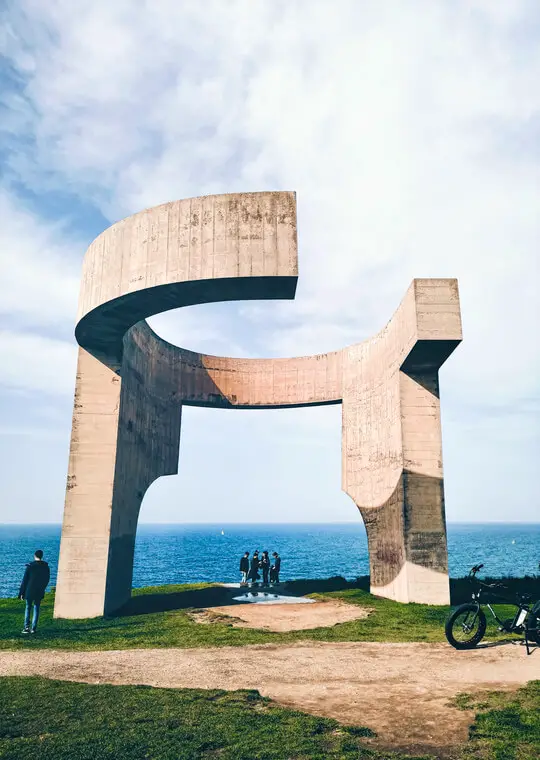
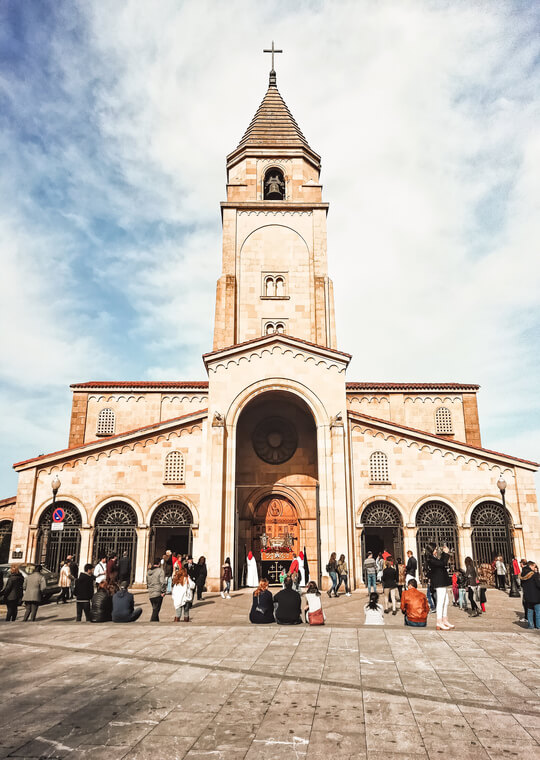
Also take the opportunity to visit the Plaza Mayor and end with a walk in the city’s harbour.
» Oviedo
We continue to the capital of Asturias – the city of Oviedo. Oviedo is a photogenic city, with photo opportunities on every corner.
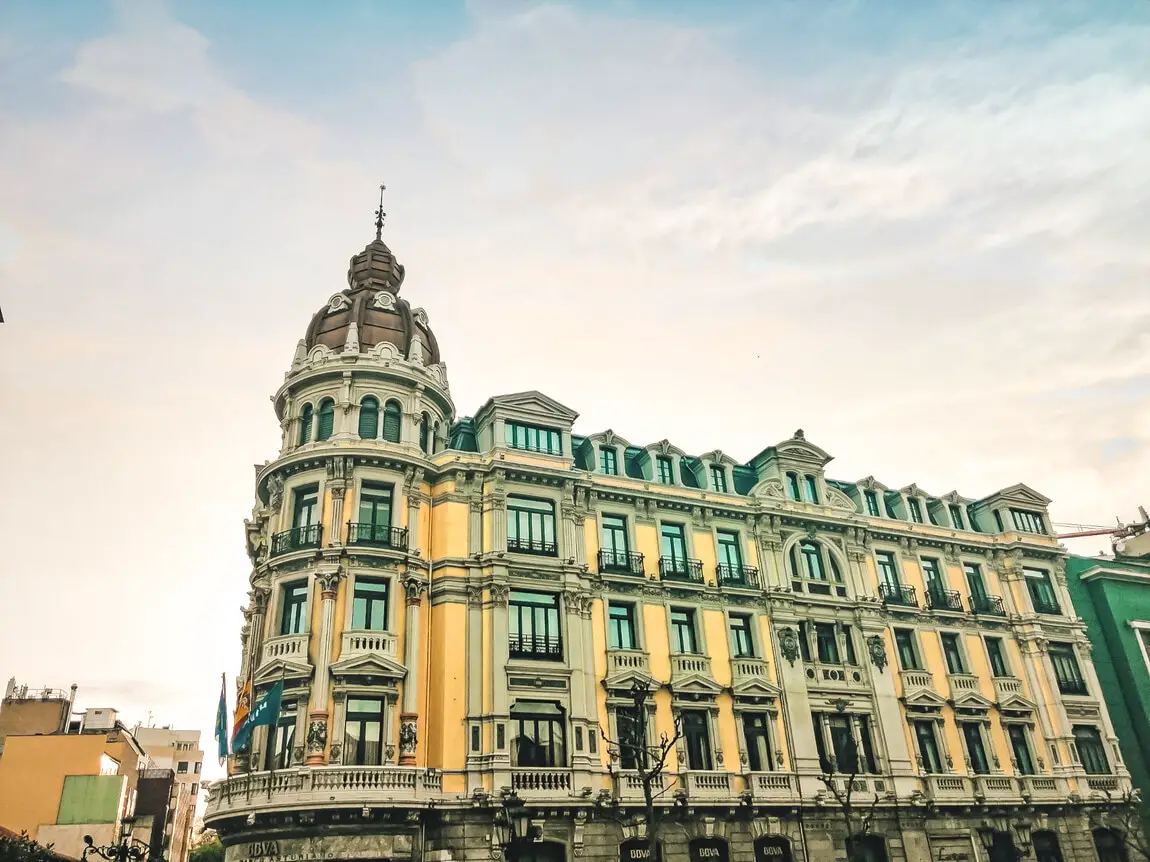
Start the visit in the square where the Cathedral of San Salvador de Oviedo is located.
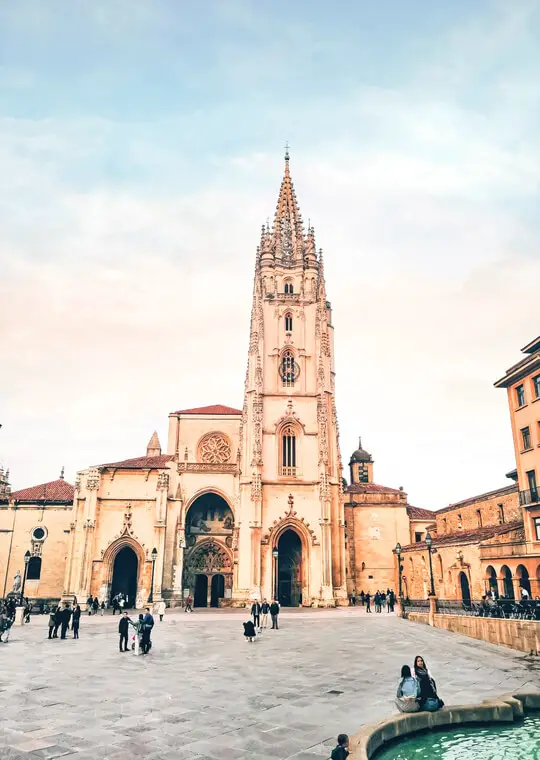

Head for one of the most lovely squares of the entire trip – Plaza del Fontán. Here you will also find El Fontán Market (open from 8h to 15h from Monday to Saturday).
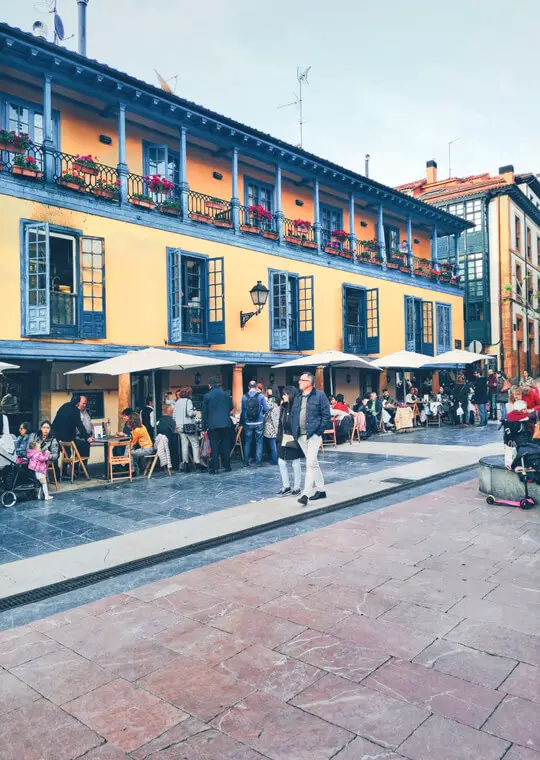
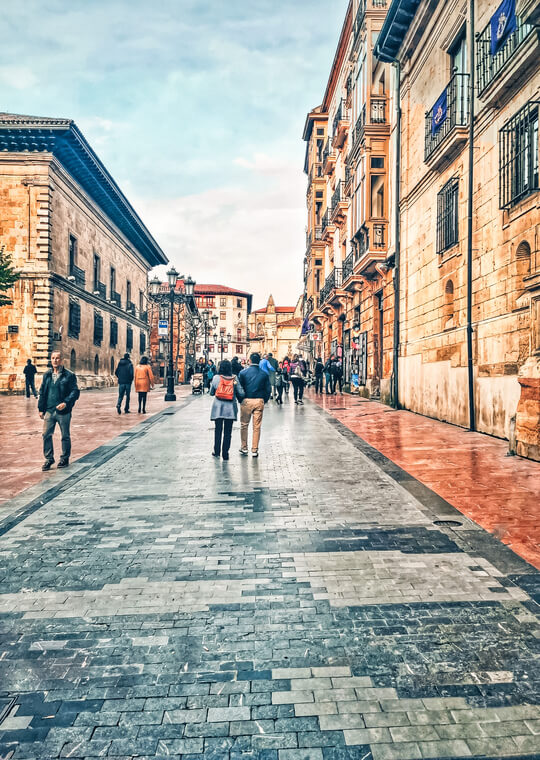
Restaurants in Oviedo
A visit to Asturias would be incomplete without trying out cider (“sidra”), which is the best-known drink in the region. The cider is served from above and is drunk in “culetes” (bottoms of a glass), and should be consumed in a single sip. And the restaurant I tried in Oviedo was Sidreria Gato Negro. It’s a tapas restaurant with a nice outdoor space! Here you can also try the famous cider.
💡 EXTRA TIP: If you visit Oviedo, do not miss the churches of San Miguel de Lillo and Santa María del Naranco. Both have been part of the UNESCO heritage since 1985. The two churches are situated on a hill with very beautiful views and are isolated from everything else.

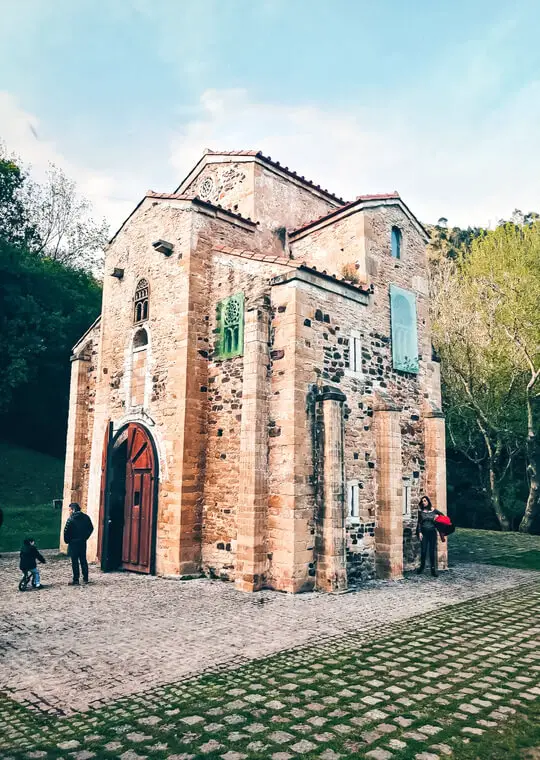
What to visit in Asturias – Day 2
The morning of our second day would be dedicated to exploring a tiny part of the beautiful Picos de Europa Park. As we visited during Easter, the access to some parts of the Park was conditioned. Therefore, we had to ride the public buses that are available during these periods (more information below).
» Cangas de Onís
Cangas de Onís is a lovely small place, known for its famous Roman bridge over the river Sella which reminds me of the famous Mostar bridge in Bosnia 😊
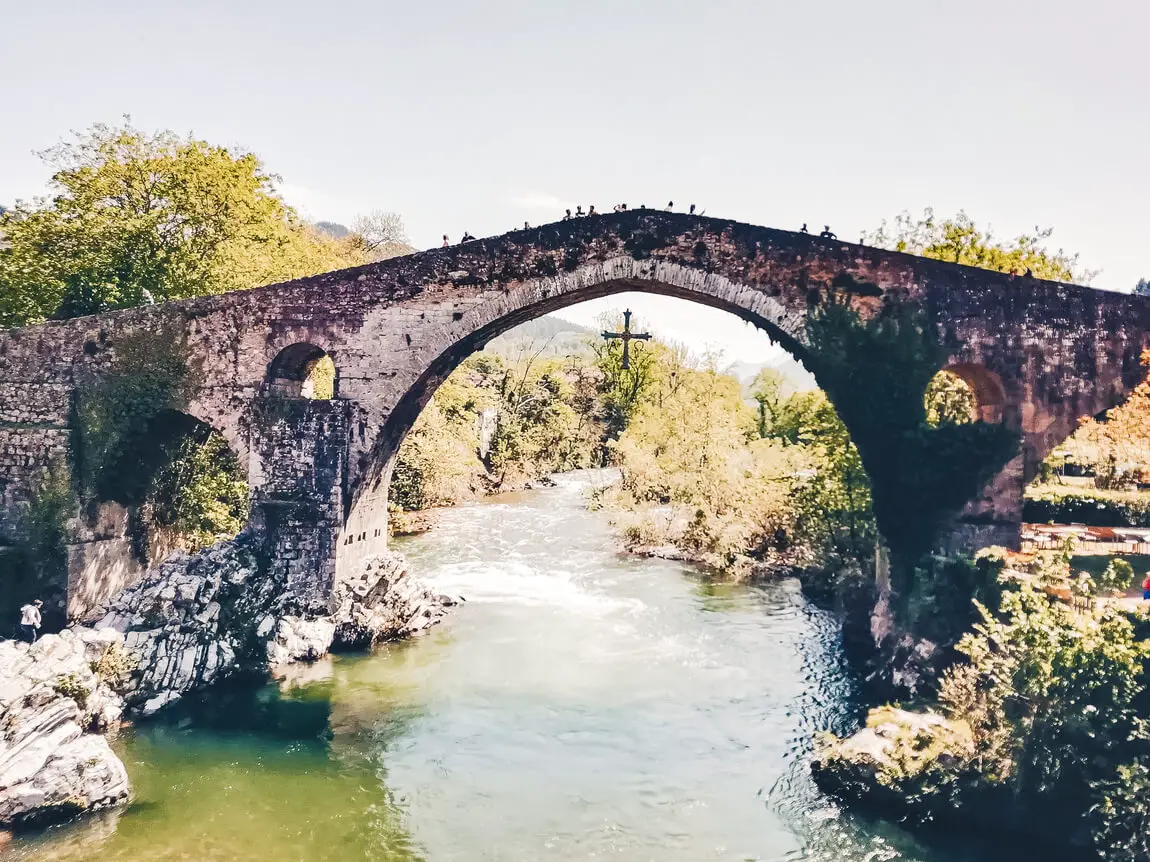
This is also a place where you can taste the famous Asturias cheeses and one of the best places to stay overnight when visiting Picos de Europa.
» Covadonga (Basilica + Lakes)
We began our visit to Covadonga at the Basilica of Our Lady of Covadonga. The Basilica is surrounded by mountains and its exterior is in pink limestone! Moreover, this site is quite symbolic, as it is usually considered one of the places where Christians began to reclaim the Iberian Peninsula.
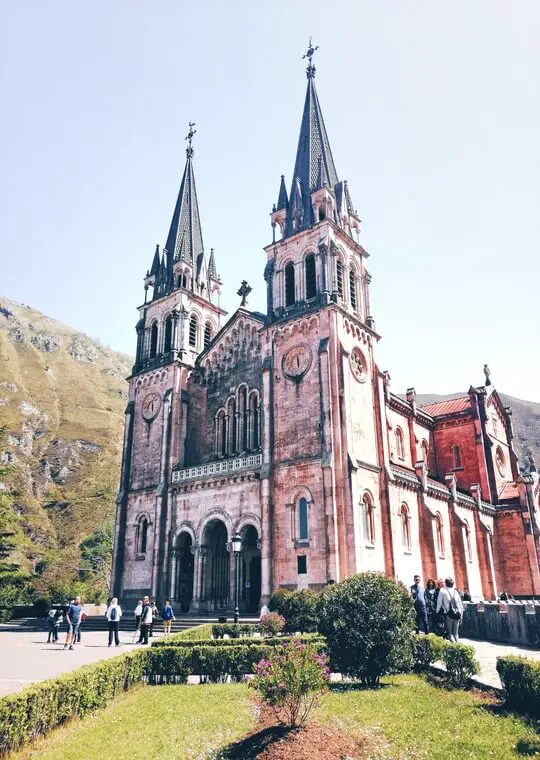
Useful information:
- The visit to the interior of the basilica is free
- Opening hours: 9h to 18h30 from Monday to Friday
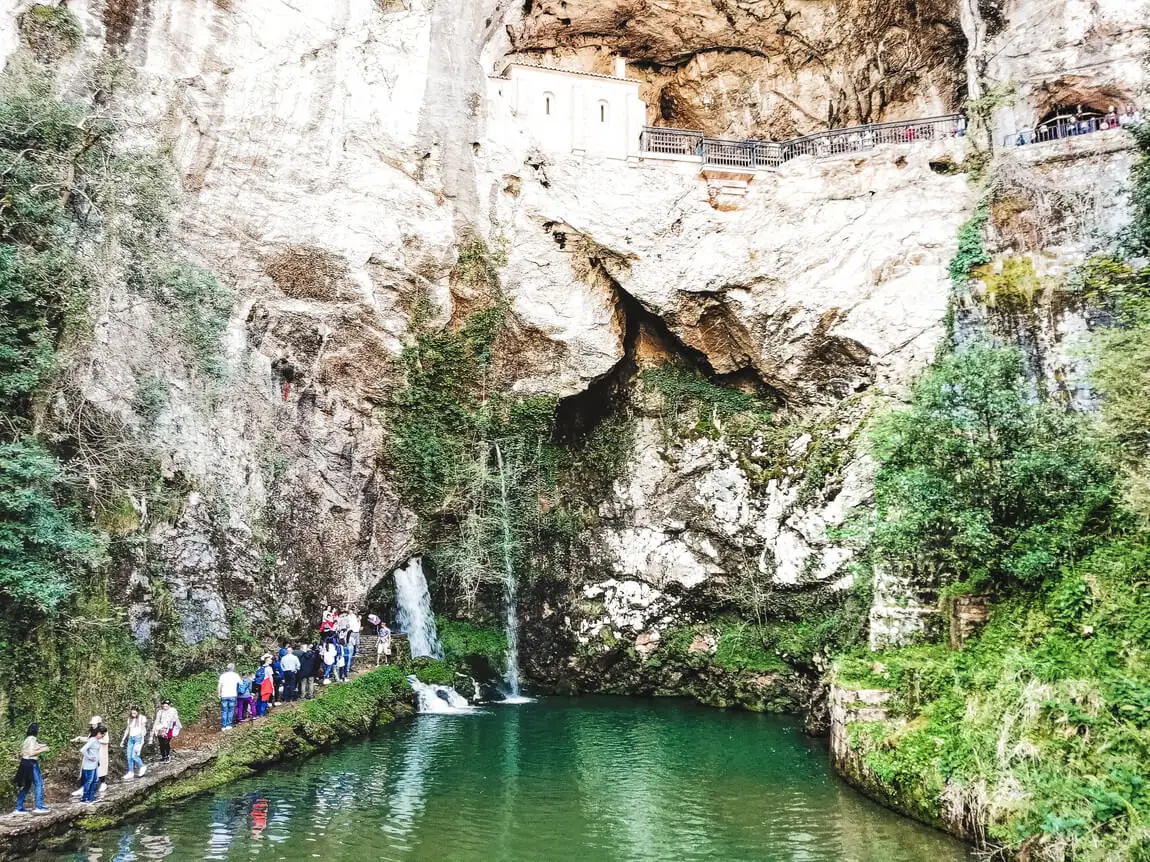
Next to the Basilica, you will also find the Holy Cave. The Holy Cave, as its name indicates, is a cave on Mount Auseva. Next to the cave, there is also a lagoon where visitors throw coins and make wishes.
» Covadonga Lakes
Next comes the visit to one of the most beautiful landscapes in Asturias… the Covadonga lakes. Located at over 1000 meters of altitude, there are 3 different lakes, all of them of glacial origin: Lake Enol, Lake Ercina and Lake Bricial (the least known).
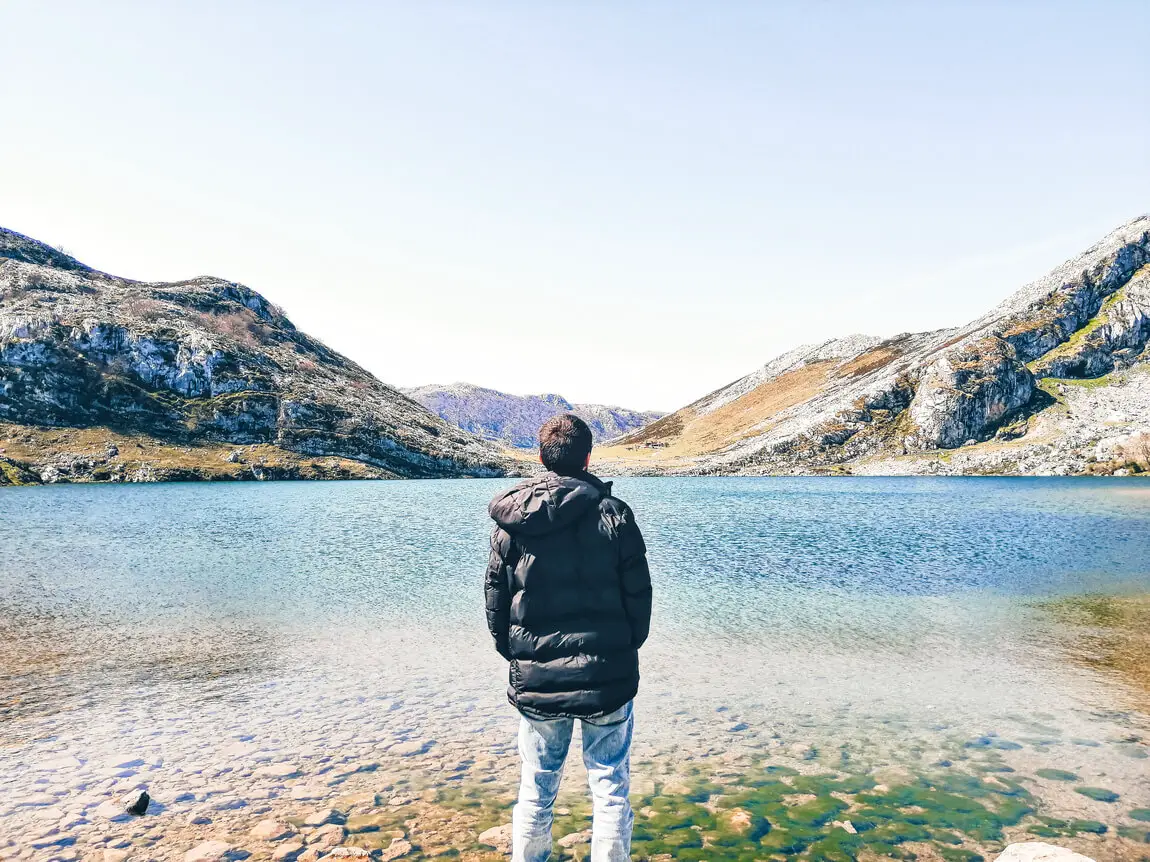
The road to the lakes is rather sinuous and steep. After all, this road is one of the toughest parts of Tour of Spain.
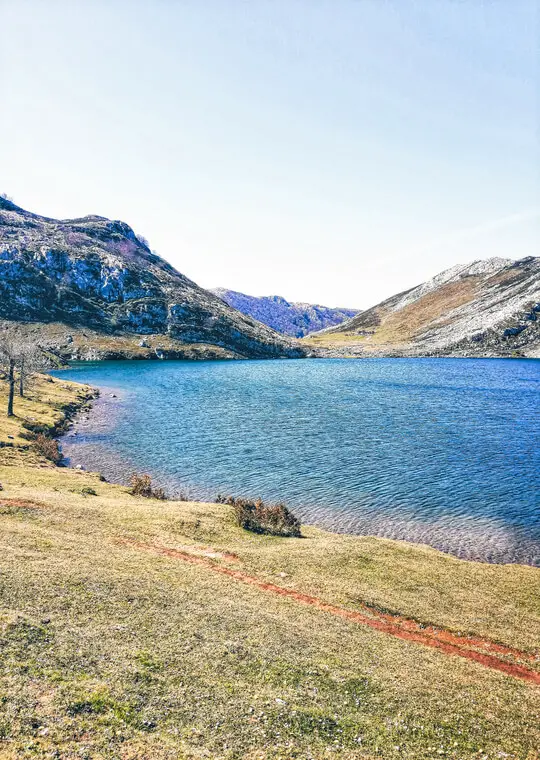
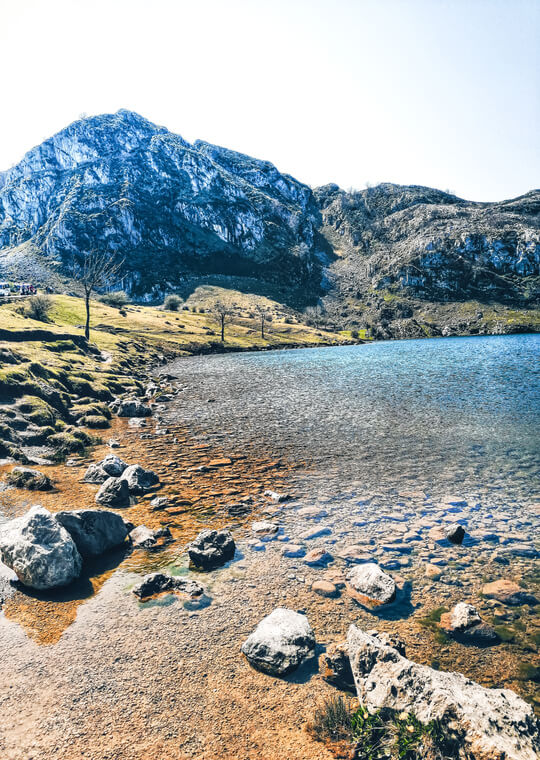
Once in the lakes area, we can explore the area freely on foot, climb to a few viewpoints or even walk along pre-defined trails – it all depends on the time you have available.

However, in order to preserve this site, access is limited during peak periods (i.e. festive seasons, and summer). During the rest of the year, it is possible to drive your own car on the road that leads to the lakes.
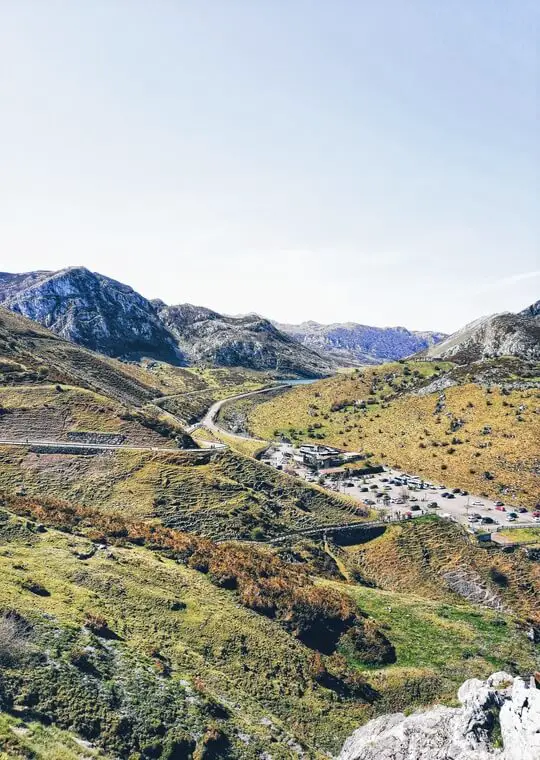
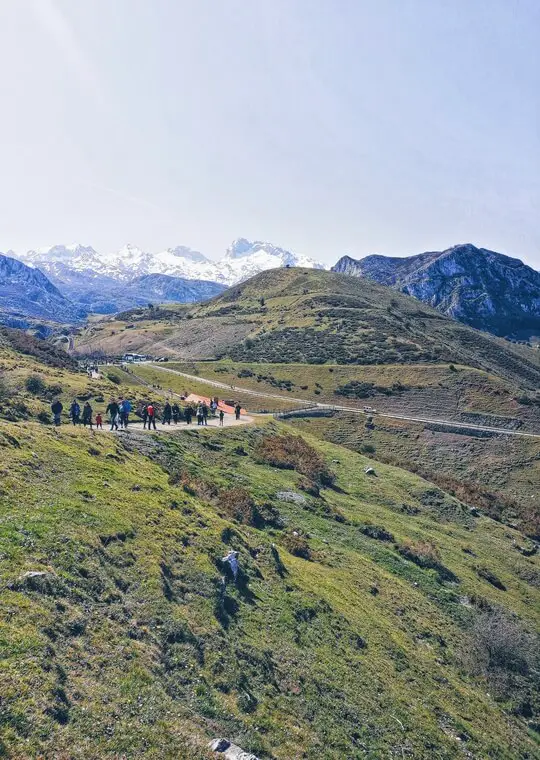
Useful information:
- It is only possible to access the lakes with your own car during certain times of the year. During busy seasons, it is necessary to take the public buses available.
- The buses are available from Cangas de Onís. Nonetheless, you are not able to take your car further, only from Covadonga (next to the P4 park).
- Where to park your car? There are several parks (2€/day) and from which you can take the buses.
- Buses leave every 10/15 minutes and the departure times depend on the time of the year.
- How much is the bus? 9€ per adult (valid for the whole day, working as a hop on/off)
- Where to purchase bus tickets? Only in the indicated parks or on the bus itself.
- There are several stops along the way at the main points of interest.
- More information here
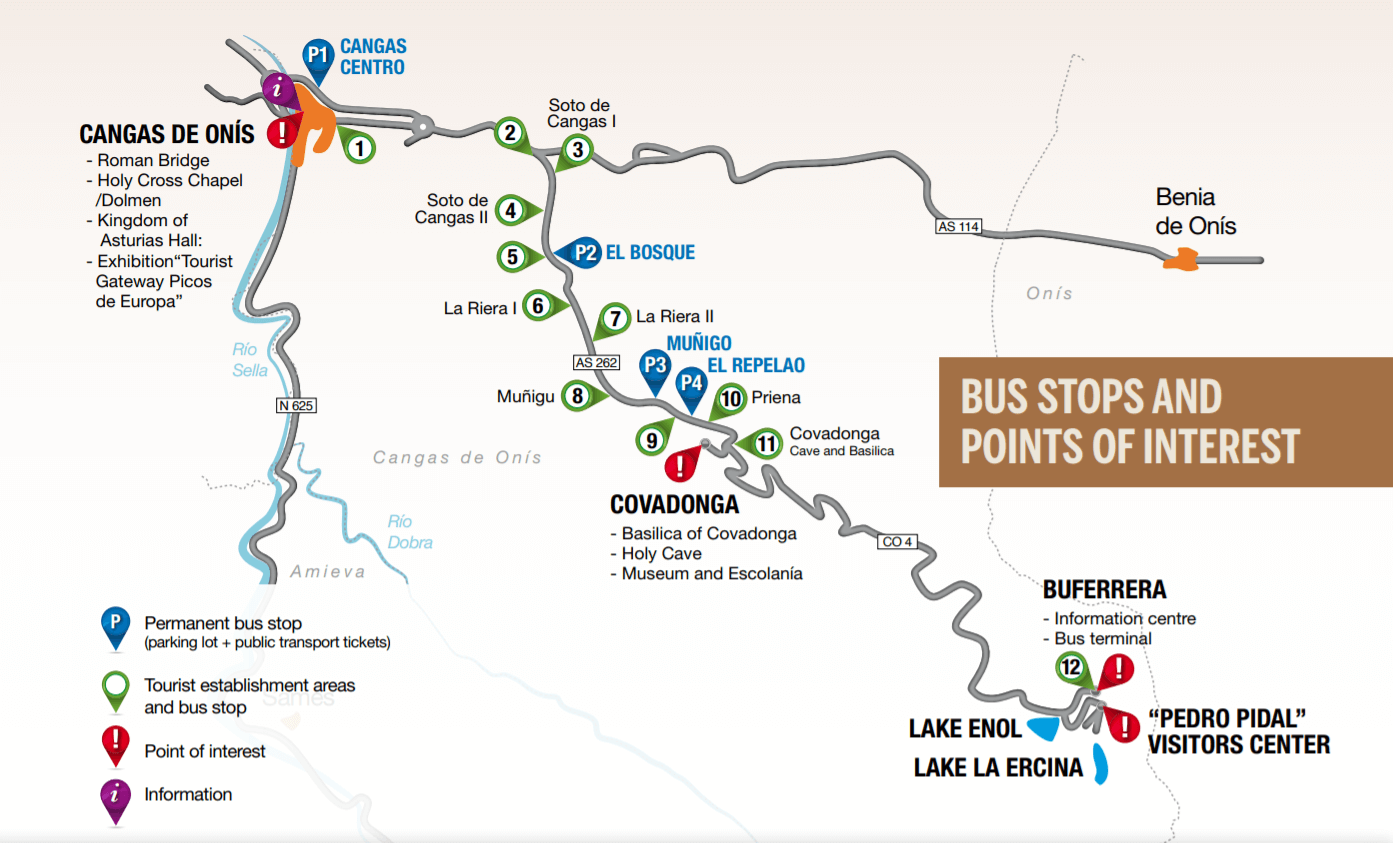
💡 EXTRA TIP: If you have some extra time on this day, you can also add the following points to this route: Del Fitu Viewpoint and Bufones de Pria. In the case of Bufones de Pria (natural phenomenon where jets of seawater spout from cracks in the cliffs), this effect usually only occurs on high tide days with heavy swell.
» Gulpiyuri Beach
Gulpiyuri is another beautiful beach in Asturias. The beach resembles a kind of bay, with the water being very shallow.
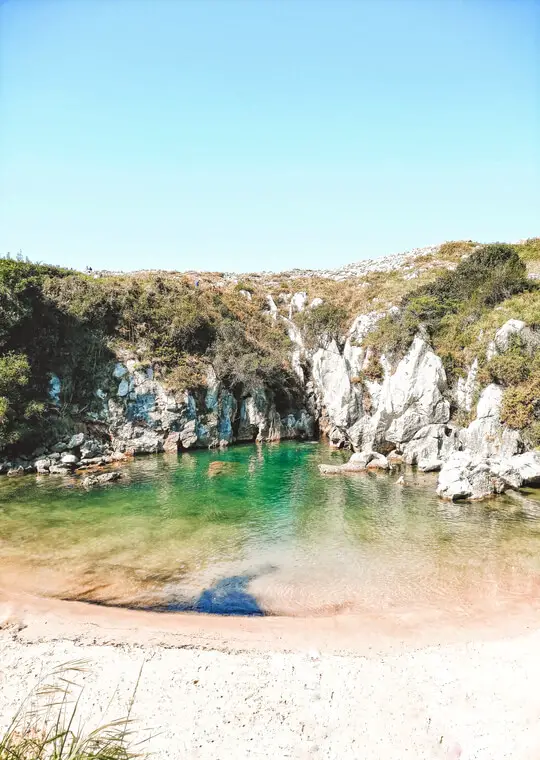

This beach is the result of a process that took place over the years, in which the sea created a cave in its interior, having its bottom eventually collapsed.
» Torimbia Beach
Another beautiful beach that Asturias offers us! If the light allows it, you will see the beautiful blue tones of this water. But, as you would expect, only the water’s colour is heavenly … the water is VERY COLD!

» Llanes
This itinerary in Asturias ends in the city of Llanes – a totally lovely coastal city. Here the sea and the mountains come together in a superb scenery.
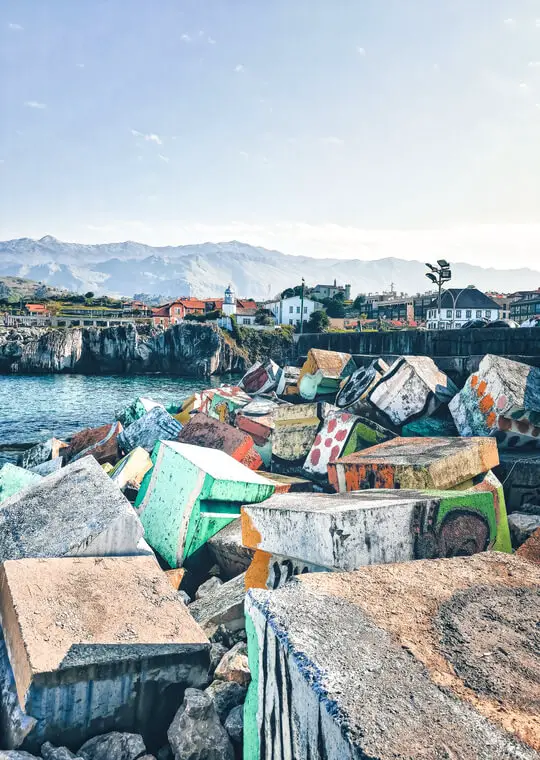
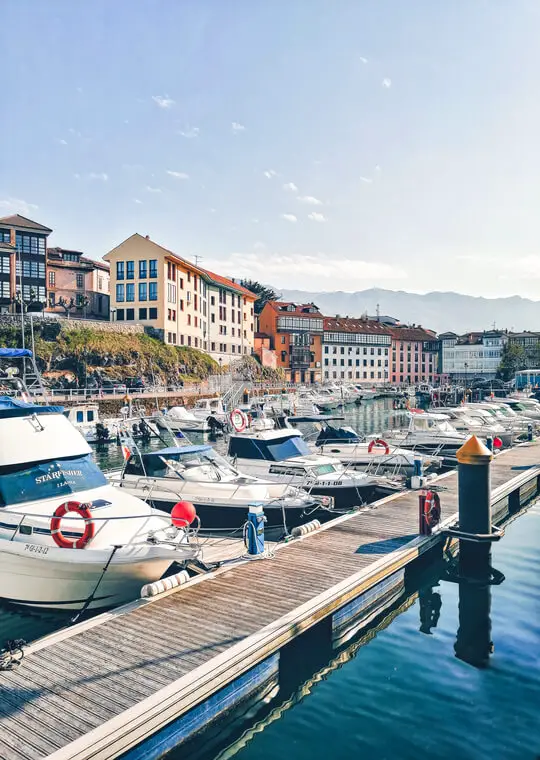

Lose yourself in its streets, have a snack and enjoy a walk by the sea. Don’t miss the Memory Cubes, a sculpture by Agustín Ibarrola with coloured cement blocks.
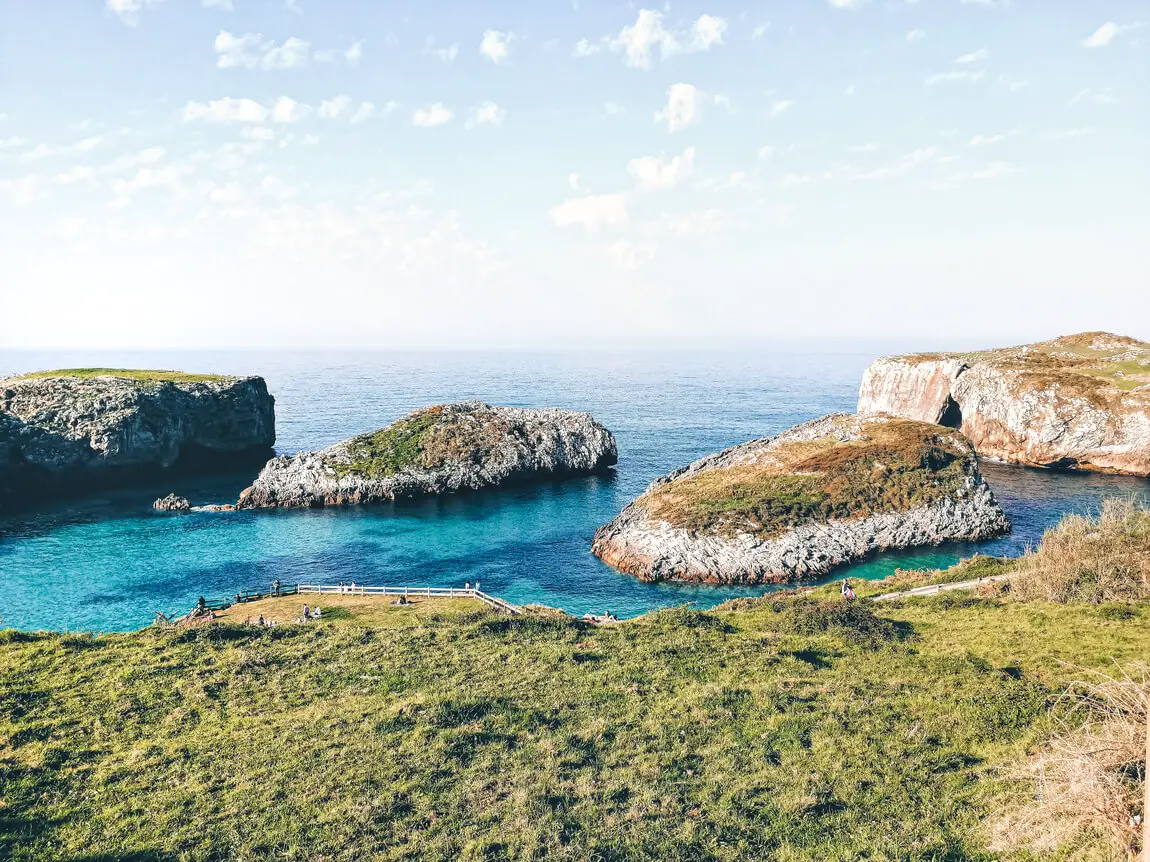
Finally, take the opportunity to admire the beautiful landscapes in Cue beach or take another cute photo at the La Boriza viewpoint. These last two points require only a short drive from the centre of Llanes.

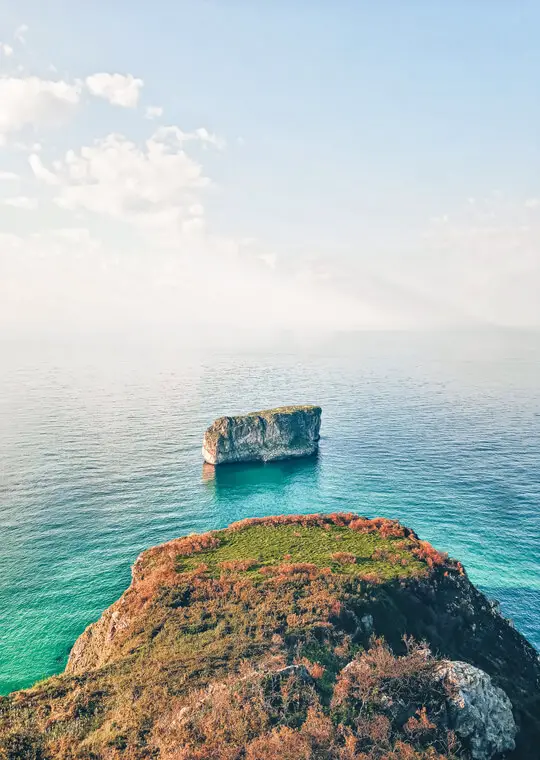
I ended this trip with the feeling that it was very short (despite the many hours spent in the car). Therefore, as you can imagine, the desire to come back with more time is great! But, even so, it’s always worth it and that’s why I decided to share this road trip with you anyway.
Disclaimer: this post may contain some affiliate links, which means I get a small commission if you buy something through my links. This doesn’t represent any additional cost to you and you’ll be supporting my work here on the blog😊

